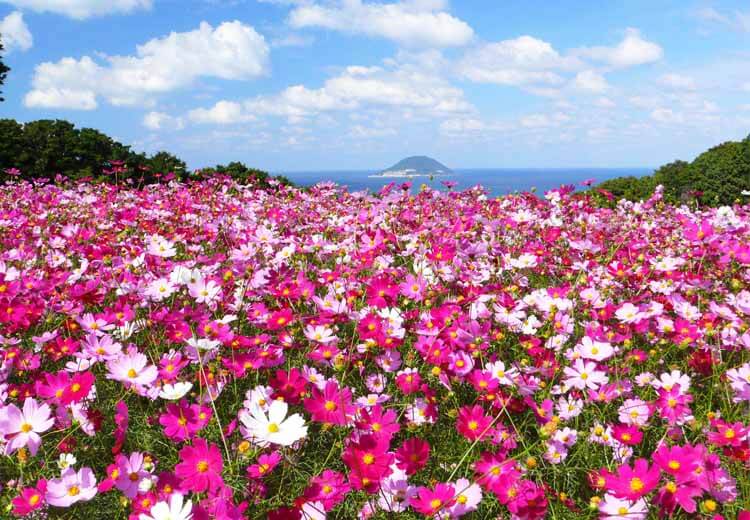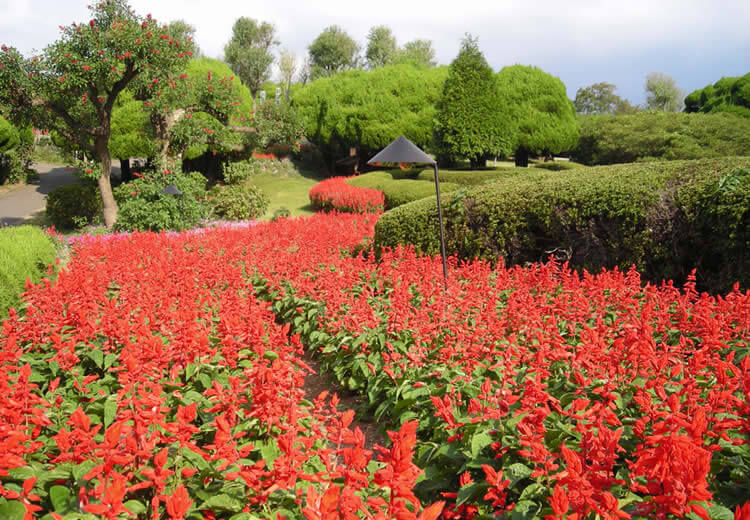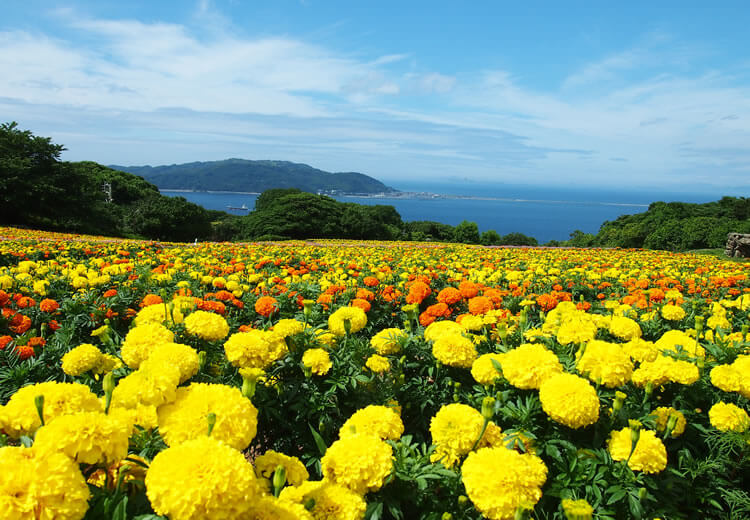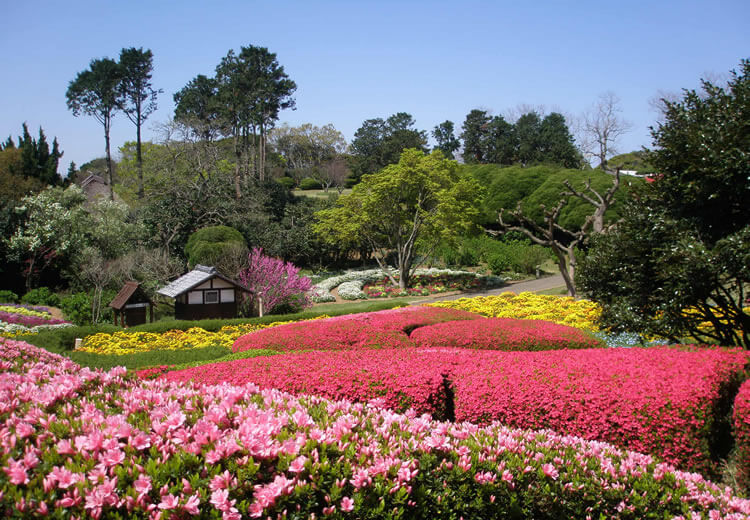Nokonoshima, the Island of Seasonal Flowers
This island in southern Japan is famous for its flower-filled park containing almost 300,000 different species of plants.

© Nokonoshima Island Park
Located in Hakata Bay, Nokonoshima Island can be accessed from the city of Fukuoka by ferry in 10 minutes. With its population of 800, this haven covering an area of 12 square kilometres lends itself to peaceful, rural escapism.
This destination, with its dense vegetation and spectacular views, offers tourists no shortage of rustic and water-based activities. Hiking, cycling, camping, pottery, and ceramics lessons… Noko Market can also be found close to the terminal, with its modest restaurants. Here, visitors can discover locally grown products and try the island’s signature food and drink, including udon noodles, oranges, and shoshu cider.
A field of colours
Famous for its park full of flowers located in the north of the island, Nokonoshima attracts numerous visitors every year. The public garden was created in 1969 by farmer Kosaku Kubota, then aged 19, with a view to making the most of the environment that was available naturally.
Thus, 300,000 flowers bloom on an area of land covering 15 hectares. Yellow, pink, orange… With over 30 varieties of plants, the space is made up of fields that stretch as far as the eye can see and that change colour with the seasons. In spring, poppies flourish there, and in summer, sunflowers can be admired. Then, when autumn comes, cosmos—the most popular flowers—give off a sweet scent, before winter signals the blooming of Japanese narcissi.
More information about the flower park can be found on the official Nokonoshima Island Park website.

© Nokonoshima Island Park

© Nokonoshima Island Park

© Nokonoshima Island Park
TRENDING
-
Ishiuchi Miyako, A Singular Perspective on Women
Recipient of the 2024 Women in Motion Award, the photographer creates intimate portraits of women through the objects they left behind.

-
Recipe for Ichiraku Ramen from ‘Naruto’ by Danielle Baghernejad
Taken from the popular manga with the character of the same name who loves ramen, this dish is named after the hero's favourite restaurant.

-
Namio Harukawa, Master of Japanese SM Art
'Garden of Domina' offers a dive into the world of an icon of ‘oshiri’, whose work has now reached a global audience.

-
The Tattoos that Marked the Criminals of the Edo Period
Traditional tattoos were strong signifiers; murderers had head tattoos, while theft might result in an arm tattoo.

-
The Emperor of Japanese Porn is Now the Star of a Netflix Series
Deliciously funny, The Naked Director especially succeeds in reviving the atmosphere that was so characteristic of 1980s Japan.





